


 Copyright 2014 by Naomi Imatome-Yun All rights reserved. No part of this book may be reproduced in any form or by any electronic or mechanical means including information storage and retrieval systems without permission in writing from the publisher, except by a reviewer, who may quote brief passages.
Copyright 2014 by Naomi Imatome-Yun All rights reserved. No part of this book may be reproduced in any form or by any electronic or mechanical means including information storage and retrieval systems without permission in writing from the publisher, except by a reviewer, who may quote brief passages.
Interior photographs by David Y. Yun
Photos of yogurt dip (), courtesy of Fotolia.
Book design by Cassie Johnston Published by The Countryman Press, P.O. Box 748, Woodstock, VT 05091
Distributed by W. W. 


 M eet gochujang, the not-yet-famous hot sauce from Korea.
M eet gochujang, the not-yet-famous hot sauce from Korea. 


 M eet gochujang, the not-yet-famous hot sauce from Korea.
M eet gochujang, the not-yet-famous hot sauce from Korea.
I dont think you can ever have too much hot sauce in your life, so I dont think gochujang has to knock all the others off your pantry shelf. Sriracha is trendier, and I do love a good sambal or a splash of Tapatio on my eggs. You might not ever see a gochujang-themed T-shirt, but I do believe that this Korean mother sauce is the most versatile hot sauce out there. WHAT IS GOCHUJANG? Gochujang isnt a fiery, in-your-face hot sauce. Its a chili paste with a complex spicy, sweet, and deep flavor. The spice is not aggressive, so its not just a hot sauce that adds some fire to your food.
Instead, gochujang is a savory sauce that can give an umami boost to almost every dish. Gochujang is thicker than other hot sauces youre probably used to; its more of a paste with the consistency of hoisin sauce, so you cant squirt it out of a bottle. It ranges in color from a ketchup shade to a deep brick red, depending on the type and age of the gochujang. Its concentrated, so even a tablespoon can add richness and a deep flavor to a sauce, stew, or marinade. WHATS IN IT? This essential Korean sauce and condiment is made of chili peppers, soybeans, sticky rice powder, and salt. Fermentation gives the sauce its deep, rich flavor.
If youre afraid of that word, fermentation, then just think of beer and bread. We can thank the natural fermentation process for some of the most delicious food and drinks in the world. Gochujang is to regular hot sauce as wine is to grape juice: the fermentation process adds richness, flavor, and health benefits to the original ingredients. If youre more familiar with Japanese food, then think of gochujang as a spicy, earthy miso paste. Bon Appetit describes it as bold miso meets that stuff in the rooster bottle.  GOCHUJANG GOES GLOBAL The Food Network blog calls gochujang the next best thing you never ate, which is only true if you havent eaten Korean food before.
GOCHUJANG GOES GLOBAL The Food Network blog calls gochujang the next best thing you never ate, which is only true if you havent eaten Korean food before.
If you have, then youll recognize the taste of gochujang from bibimbap (mixed rice with vegetables) or dukboki (spicy stir-fried rice cakes). Gochujang is a star sauce in Korean cooking, but you can also use gochujang in a million other dishes. As with Korean cuisine in general, the possibilities are endless. The thing I love about cooking Korean food is that I can be adventurous and flexible. You dont have to stick to a recipe religiouslyuse a different protein or add more onions and omit green peppers if that suits you better. Gochujang adds depth and a slow-burning heat to marinades, soups, stews, salad dressings, and even cocktails.
Blend gochujang with mayo, ketchup, barbecue sauce, or ranch dressing for a great dipping sauce. Add some to marinades, vinaigrettes, and hearty stews like chili for amazing results. Gochujang can elevate everyday farefrom burger and fries to bagel with cream cheeseto extraordinary heights. Just beware, its easy to get addicted to the stuff. THE HISTORY OF GOCHUJANG Korea is a nation on a small peninsula. Its mountainous terrain, distinct seasons, different coastal regions, and neighbors (China and Japan) have all influenced its cuisine.
Korean cooking features advanced pickling and preserving methods, and imaginative uses of every possible food resource available to the people. One of the most incredible parts of Korean food history is that one of the defining aspects of Korean cuisineits spicinessis imported. The chili pepper is native to South America. It is actually the Spanish explorer Christopher Columbus who is credited with bringing the chili pepper to Europe. From there, Portuguese traders brought the pepper to the Asian continent via India. It didnt take long for the chili to become popular all over Asia; in fact, its impossible to imagine most Asian cuisines without some spice and heat.
Whether the chili pepper made it to Japan via the Chinese or the Portuguese is unclear, but an early seventeenth-century Korean record written by scholar Yi Sugwang notes that chili peppers were brought into Korea by the Japanese.  An eighteenth-century text, the Jungbo Sallim Geongje (1765), contains what might be the first record of gochujang, although it was probably made earlier than that. Gochujang was first created by adding ground-up chilies to fermented soybeans with glutinous rice flour, and then fermenting the mixture in the sun in earthenware pots. Gochujang is still made with those same ingredients today. Until recently, gochujang was made individually in every household, meaning that recipes and flavor varied among families, towns, and regions. Commercial production of gochujang took off in the 1970s, and now most gochujang does not come from family pots.
An eighteenth-century text, the Jungbo Sallim Geongje (1765), contains what might be the first record of gochujang, although it was probably made earlier than that. Gochujang was first created by adding ground-up chilies to fermented soybeans with glutinous rice flour, and then fermenting the mixture in the sun in earthenware pots. Gochujang is still made with those same ingredients today. Until recently, gochujang was made individually in every household, meaning that recipes and flavor varied among families, towns, and regions. Commercial production of gochujang took off in the 1970s, and now most gochujang does not come from family pots.
When I asked friends and family in Korea for their own gochujang recipes, most of them laughed in disbelief. Even older relatives and friends revealed that they had not made their own gochujang in a very long time. In the same way that most Americans dont make ketchup and mayonnaise at home, the vast majority of people in modernized South Korea buy their gochujang from grocery stores. Gochu means chili and jang means sauce in Korean. Along with ganjang (soy sauce) and daenjang (a fermented soybean paste similar to Japanese miso), gochujang is one of Koreas most essential mother sauces. WHERE TO BUY GOCHUJANG IN AMERICA Its easy and convenient to get gochujang in the States.
Next page
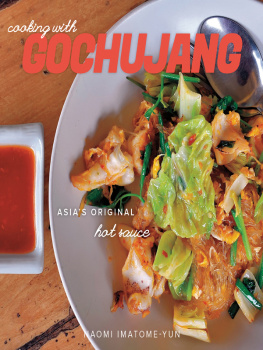
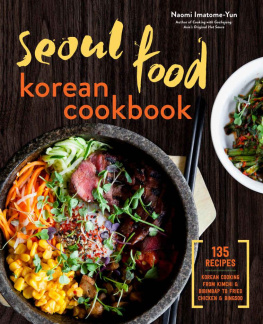


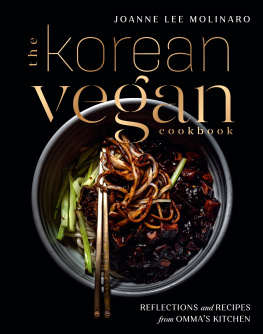

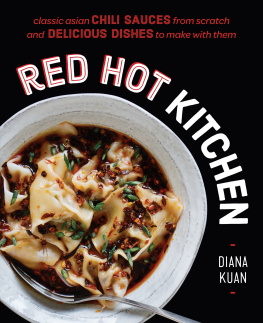
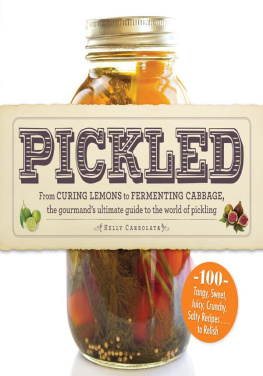

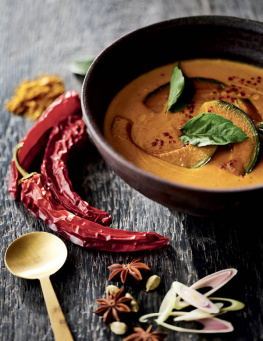
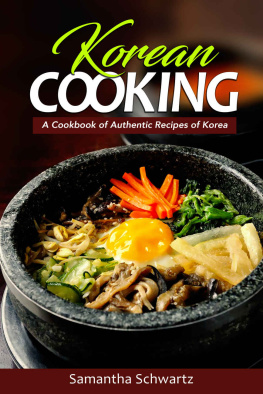




 Copyright 2014 by Naomi Imatome-Yun All rights reserved. No part of this book may be reproduced in any form or by any electronic or mechanical means including information storage and retrieval systems without permission in writing from the publisher, except by a reviewer, who may quote brief passages.
Copyright 2014 by Naomi Imatome-Yun All rights reserved. No part of this book may be reproduced in any form or by any electronic or mechanical means including information storage and retrieval systems without permission in writing from the publisher, except by a reviewer, who may quote brief passages.


 M eet gochujang, the not-yet-famous hot sauce from Korea.
M eet gochujang, the not-yet-famous hot sauce from Korea.  GOCHUJANG GOES GLOBAL The Food Network blog calls gochujang the next best thing you never ate, which is only true if you havent eaten Korean food before.
GOCHUJANG GOES GLOBAL The Food Network blog calls gochujang the next best thing you never ate, which is only true if you havent eaten Korean food before. An eighteenth-century text, the Jungbo Sallim Geongje (1765), contains what might be the first record of gochujang, although it was probably made earlier than that. Gochujang was first created by adding ground-up chilies to fermented soybeans with glutinous rice flour, and then fermenting the mixture in the sun in earthenware pots. Gochujang is still made with those same ingredients today. Until recently, gochujang was made individually in every household, meaning that recipes and flavor varied among families, towns, and regions. Commercial production of gochujang took off in the 1970s, and now most gochujang does not come from family pots.
An eighteenth-century text, the Jungbo Sallim Geongje (1765), contains what might be the first record of gochujang, although it was probably made earlier than that. Gochujang was first created by adding ground-up chilies to fermented soybeans with glutinous rice flour, and then fermenting the mixture in the sun in earthenware pots. Gochujang is still made with those same ingredients today. Until recently, gochujang was made individually in every household, meaning that recipes and flavor varied among families, towns, and regions. Commercial production of gochujang took off in the 1970s, and now most gochujang does not come from family pots.